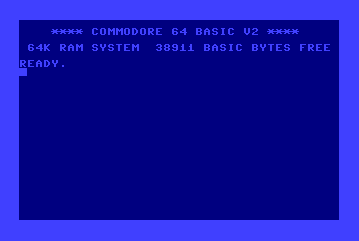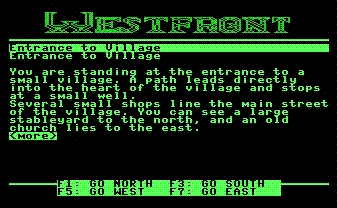The Commodore User II

In Windows a blue screen is bad. But here, it's Nirvana, baby!

The Commodore 128
Commodore Business Machines introduced the Commodore 128 in January of 1985 at the Consumer Electronics Show (CES). The machine was a significant upgrade to the Commodore 64, had three modes of operation (C64, C128 and CP/M) and included a faster disk drive (the 1571), as well as 16KB of extra RAM devoted exclusively to video.
At the heart of the Commodore 128 is a MOSTEK 8502 CPU running at 1 MHz (2MHz in FAST mode). This processor is backwards compatible with the MOSTEK 6510 used in the Commodore 64. In fact, the 128 is 100% compatible with both Commodore 64 hardware and software!
In 128 mode, the system has access to a 128KB memory, including 64KB in ROM. Programming in 128 mode is a joy, with 122,365 bytes available to BASIC! This is nearly four times the amount available with the Commodore 64! Maximum memory can be increased to 512KB via the Expansion Port on the back of the system. Commodore engineers used TMS4164-20 microchips in two banks for memory.
Operating voltage for the Commodore 128 is rated between 105-125 VAC. The power supply unit gives off +5 VDC/+9 VAC. CP/M-compatible software may be used in CP/M, which is loaded from disk and allows for 58KB of TPA memory. CP/M mode is powered by a Zilog 80A microprocessor. With the architecture of the 1571 disk drive, software written for a variety of popular CP/M machines may be loaded and run while in CP/M mode.
Video is maintained by two microprocessors. In C64 and C128 modes, the video is displayed through the Commodore 64's original VIC-II microchip (designated VIC-II 6845). In 80 column mode, video display is redirected to the VDC 8563 microprocessor. The VDC is unique in that it is entirely responsible for displaying TEXT ONLY (no sprites or graphics in 80 columns, without special programming in software). The VDC has access to 16KB of Video RAM (64KB with the Commodore 128-D).
For sound, the familiar SID 6581 microchip is used. Commodore engineers included SID and VIC-II compatibility to allow existing Commodore 64 users to upgrade to the Commodore 128. In both 64 and 128 modes the VIC-II and SID are accessible from BASIC and ML.
Programming the Commodore 128 is a dream. With over 58KB of program space (including an additional 64KB for variables and strings), the upgraded BASIC includes commands from previous versions of Commodore BASIC (written by Microsoft for Commodore). Over 80 commands are available, making sprites, music and machine language easier to use from BASIC.
On screen resolution is 320 x 200 pixels, with 16 colors. In multicolor mode, only 4 colors are available. Screen size in 40 columns is the standard 40 x 25, while in 80 columns it is 80 x 25. Sprites are the same in both 64 and 128 modes. Eight sprites are available to BASIC, with more in ML through software programming.
The Commodore 128 has the ability to use both a monitor and TV at the same time. This is useful in two-player games whereby simultaneous gameplay is necessary. More than one program used this technique, including Cleve Blakemore's Dark Fortress (Ahoy! magazine, January 1987).

Listed below are a variety of links relating to the Commodore 128 and 128-D personal computers. If any links are out of date, then please e-mail me.
The
Commodore 128 Page
Google
Search: Plus/4 on the Commodore 128
The
Commodore 128 Graphic Booster
Commodore
128
80
Column games for C=128
Commodore
128 Specifications
World
of M.U.L.E.
Jack's
M.U.L.E. Page
C128
public domain programs
Keith's
Commodore-Programming Aids
c128
SYSTEM GUIDE
Commodore
128 HTML System Guide